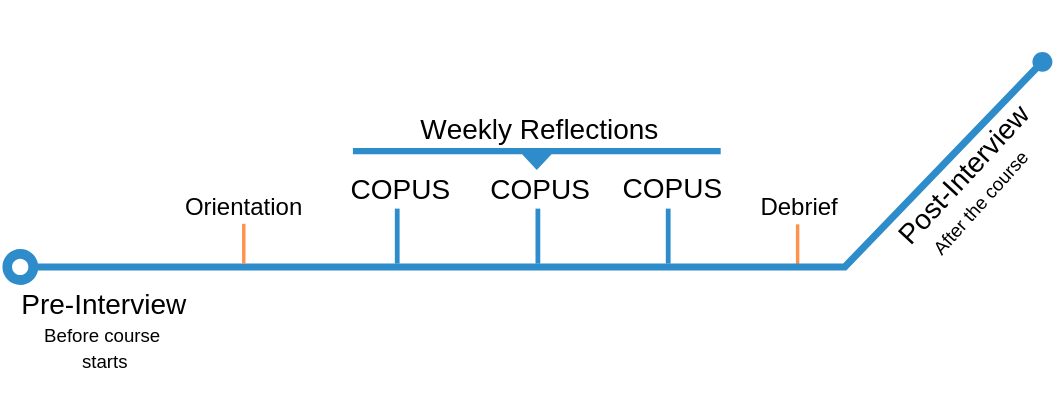What do faculty members gain from the initiative?
The goal of Teaching Start-Up is to provide new faculty members and faculty who are new to active learning and evidence-based pedagogy, with an opportunity to teach a course that is already structured based on research on how people learn. There is evidence from the departmental initiatives that this type of early experience sets faculty members up well for their future teaching assignments at UBC (Stang et al., 2017; Holland et al., 2018; and Strubbe et al., 2019).
In this initiative, new faculty members teach a course with faculty members who have experience implementing evidence-based pedagogy. This opportunity is provided as part of Science’s new faculty start-up package. Both faculty members in a pair receive full teaching credit for the course, and the Science Dean’s Office splits the cost of the additional teaching credit with the department.
| New faculty | Experienced faculty | |
|---|---|---|
| New ideas on how to teach students effectively, with understanding of the rationale behind the pedagogy | ✓ | |
| Experience in designing and applying active learning activities | ✓ | |
| Deliberate/targeted practice in research-based teaching techniques, with feedback | ✓ | |
| Experience in mentoring a colleague in teaching | ✓ | |
| Classroom data (COPUS, BERI, and/or student interviews) that may be included in teaching portfolios | ✓ | ✓ |
| Structured opportunities to reflect on teaching practices | ✓ | ✓ |
| Skylight support | ✓ | ✓ |
What is expected of faculty members in the initiative?
Faculty members are asked to participate in a number of activities, including:
- A pre-interview
- An orientation session
- Classroom observations with feedback
- Weekly reflections
- A debriefing session
- A post-interview

| New faculty | Experienced faculty | |
|---|---|---|
| Actively observe and consider teaching methods | ✓ | |
| Question the expert; engage in dialogue | ✓ | |
| Participate in the design of and lead some course activities | ✓ | |
| Accept and incorporate feedback into teaching | ✓ | |
| Apply teaching techniques learned through paired teaching, both in the current class and in future teaching | ✓ | |
| Explain teaching techniques they are using and the rationale for using them | ✓ | |
| Engage in discussions about teaching, especially those directed by questions posed by new faculty | ✓ | |
| Provide feedback to new faculty on their in-class teaching and the course activities they design | ✓ | |
| Create opportunities to provide feedback | ✓ | |
| Build your mentoring skills | ✓ | |
| Participate in a scheduled meeting dedicated to paired teaching (30 minutes per week) | ✓ | ✓ |
| Fill in a brief reflection form weekly | ✓ | ✓ |
| Attend (at least roughly) every class period | ✓ | ✓ |
| Participate in a 30-minute interview before and after the semester, and 1 year after the course ends | ✓ | ✓ |
| Have classes observed by an SES, either occasionally or regularly | ✓ | ✓ |
| Divide teaching time generally evenly, alternating teaching through the term | ✓ | ✓ |
Recommendations to participating faculty
Read a published article on recommendations for faculty success in paired teaching.